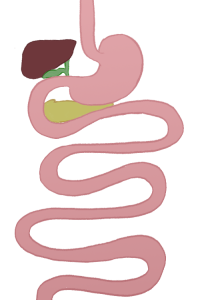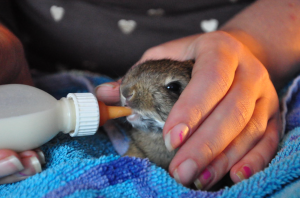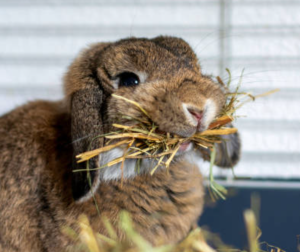4 The Stomach and Small Intestine (Guest Starring the Liver and Pancreas!)

The Stomach

From the mouth, down the esophagus, the chewed up food drops into the stomach. Rabbits have a stomach similar to humans in terms of function, but it is shaped in a way that prevents rabbits from vomiting. Rabbits have a stomach pH of 1 to 2, so it is really quite acidic! The hydrochloric acid sterilizes the vegetation the rabbit swallowed, and digestive enzymes from the stomach begin to break down the chewed food pieces even more. The rabbit’s stomach is relatively small, so the food, now called chyme, leaves the stomach through the pylorus (the sphincter that connects the stomach to the small intestines) fairly quickly.
The Small Intestine
The small intestine is made up of 3 parts: the duodenum, the jejunum, and the ileum. As the chyme enters the small intestine, the stomach acid is neutralized while the chyme, now digesta, encounters enzymes produced by the pancreas that break it down to proteins, sugars and starches that can be absorbed. The liver creates bile, a yellow-green fluid, that gets stored in the gallbladder and released into the duodenum to help break down any fats the rabbit ingests.
As the digesta gets moved quickly along the small intestine, it continues to absorb the proteins, sugars and starches, all the while pushing the indigestible fiber left over down to the cecum, our next major part of the digestive tract (and perhaps the most important.)

